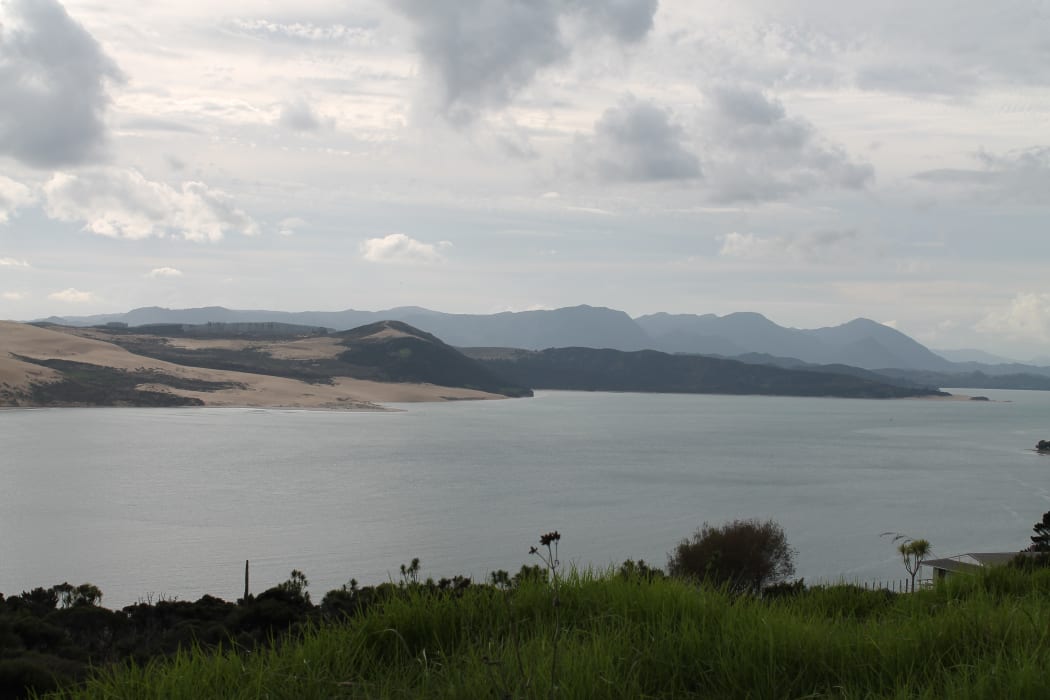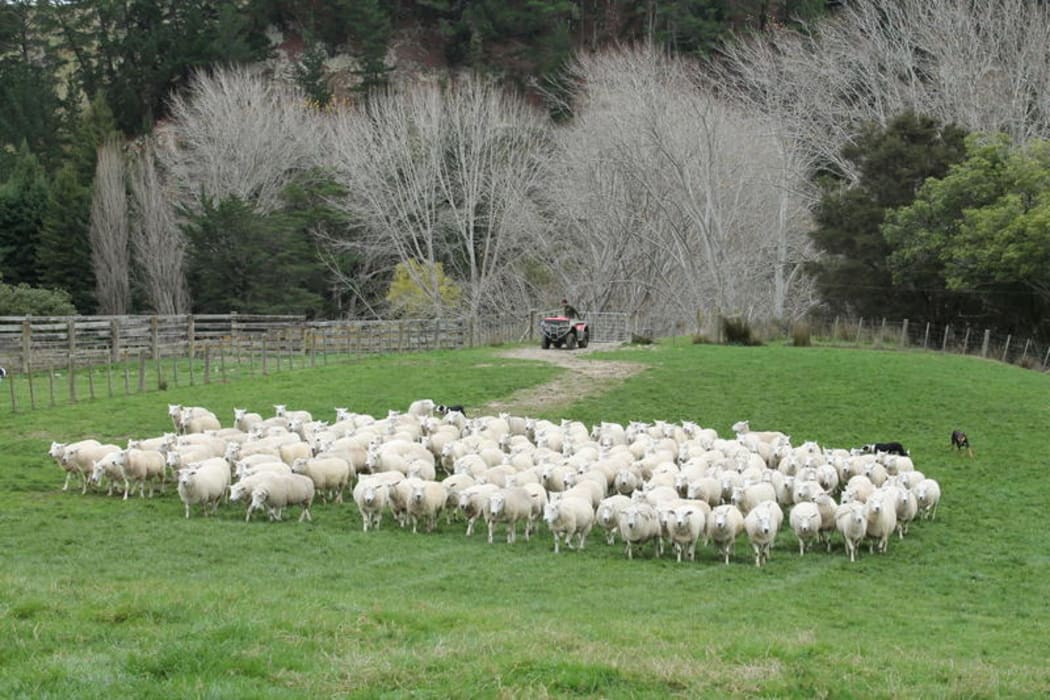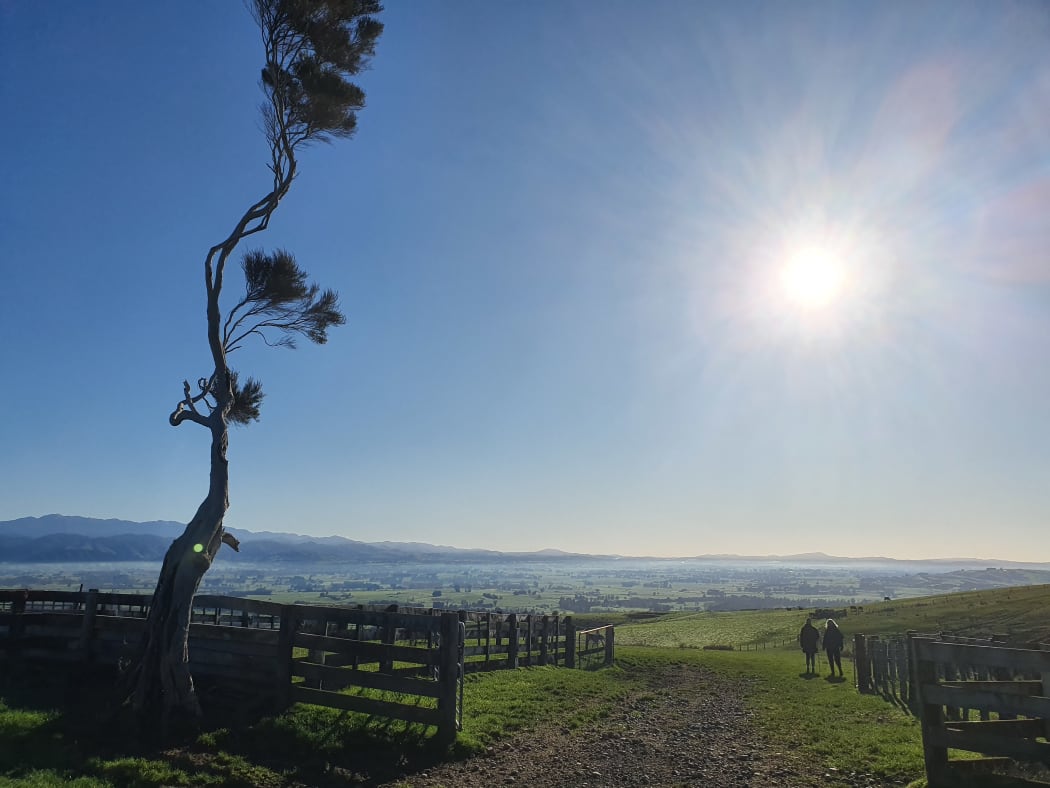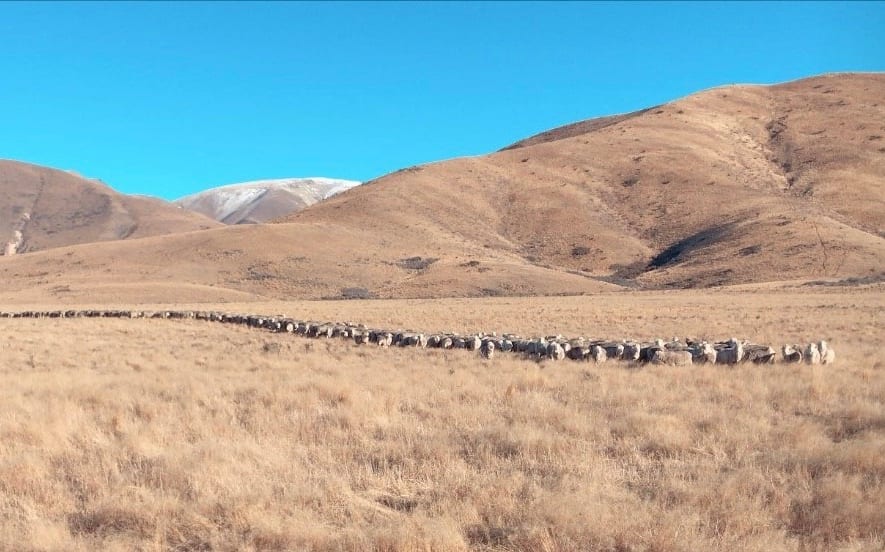
Hokianga Harbour Photo: RNZ/Carol Stiles
Drought hit Hawke's Bay has had rain and in the South Island, Tekapo farmers have been working in temperatures that have barely hit five degrees.
Northland, around the Bay of Islands has had 30 millimetres of rain but is still unbelievably dry for the time of year. Towns and farms need water.
On the west coast around Opononi and Broadwood dams are virtually empty. There's a bit of demand for cattle that can be finished quickly - especially male cattle because they have the capacity to put on more weight than females - but people are uneasy about taking on longer term prospects.
Pukekohe growers were very busy planting potatoes and sowing onions in perfect conditions until 42mm of rain arrived on Thursday. People are mourning the loss of one of the most well-known vegetable growers in New Zealand. Lex Wilcox of the huge potato, onion and carrot growing company Wilcox and Sons, has died at 87.
Parts of Waikato had a good dollop of rain on Thursday. Grass is still growing but it's slow to come away in the drought-hit Hauraki plains. Feed is being donated to farms there from elsewhere in the region. A few early calves are starting to appear.
Rain and a quake
Taranaki also had quite a bit of rain mid-week - 50mm around Hawera and more at higher altitudes. Grass growth has been above average in mild temperatures - it needs to be.
Our contact in Gisborne was woken with a sharp shake by Friday's earthquake. He says the region's mandarin harvest is almost over and this week's consistent rain will have slowed up work on veggie crops. The local paper has reported 1700 jobs have disappeared in Gisborne and up the coast - a lot in forestry. He says fortunately tourism isn't the backbone of the region and there should be quite a few seasonal jobs coming up.
Hawke's Bay has had some mild rain but seven months of drought has really put a lot of farms under pressure - particularly early lambing farms; they'll need feed before it's had a chance to grow and it's almost impossible to buy in hay and silage. Fertiliser spreading's going flat out. It's one of the only ways farmers can create more feed and the rain will have been ideal for helping it soak in. Some lamb finishers will have only bought in a third to half of the lambs they would usually.

Photo: RNZ/Carol Stiles
There's been nice long steady rain in Manawatū, the first big proper rain since the dry. Luckily it's still warm enough for grass growth. The lack of supplementary feed for the winter is still a worry but one farmer says at least every day now is a day closer to spring. He's bringing his ewes in for pregnancy scanning.
It was a mild 15 degrees in Horowhenua on Friday morning and combined with 50mm of rain in the last few days, the amount of feed on farms is improving. A grower says he's harvesting his final strawberries today and starting to cut down the asparagus fern - remnants of last year's crop - and is preparing the ground for spring.
Wairarapa started off the week with a couple of ripper frosts but by the end it was very wet and unusually warm for the time of year. Dams are starting to recharge and creeks are flowing. One farmer described his pasture growth as phenomenal. His cows were late to milking due to flooding. Quite a few sheep farmers have opted not to shear because of the low value of wool. There are some disappointing scanning results put down to the earlier dry but those that fed out are seeing better results.

Photo: RNZ/Sally Round
Across Cook Strait and there has been nice rain in the Tasman region. It was needed two months ago but the farmer we spoke to says he's had more growth on farm in the past twenty days than he's had all year. His crops are visibly growing and he says he hasn't needed to use them yet. He is feeding baleage out to cattle a month earlier than normal because capital stock need to keep weight on.
Cold, wet and miserable
Marlborough has been cold, wet and miserable. One high country farm recorded 35mm of rain but it's too late in the day for any growth to come from it. The average temperature's been 5.5 degrees, the coldest morning -3.5. Farmers wanting to eek out on-farm supplements are still finding it hard to source hay and baleage.
A dairy farmer just south of Franz Josef on the West Coast had a 130mm downpour on Monday night. He says it's not unusual though as the average yearly rainfall is about 5 metres! His herd was dried off three weeks ago, ending his worst season on record. The last of the cull cows have finally gone to the abattoir after some length delays.

Photo: supplied Riley Kennedy
Canterbury had a 20 degree day on Wednesday, but then winter arrived. The week ended with 40 to 50mm of rain falling on the upper plains. And further south around Tekapo there have been a few really good dumps of snow in the past two weeks. Last year they only had one in the area and the year before that, none. Rain arrived on Thursday night and temperatures hovered around three degrees some days.
A South Otago farmer near Balclutha has had 10mm of rain, soil temperatures are at 5.5 degrees so there's some grass growth. Ewe scanning results will be coming out from now on and farmers hope they're better than last year where drought knocked tallies. The farmer we called sent a truckload of 18 to 20 month old cattle to the freezing works this week and they weighed a healthy 320 to 340 kilograms on the hook.
Mataura in Southland has had 25mm of rain but it's not too muddy underfoot and there's been no feed wastage. Milk production for the just ended season is four percent down on the previous season. The mood amongst farmers is good though because the pay-out appears to be rebounding. Environment Southland flew over our contact's riverside property recently and was happy with what it saw in terms of compliance. They're looking for best practice farming of winter grazing areas.

